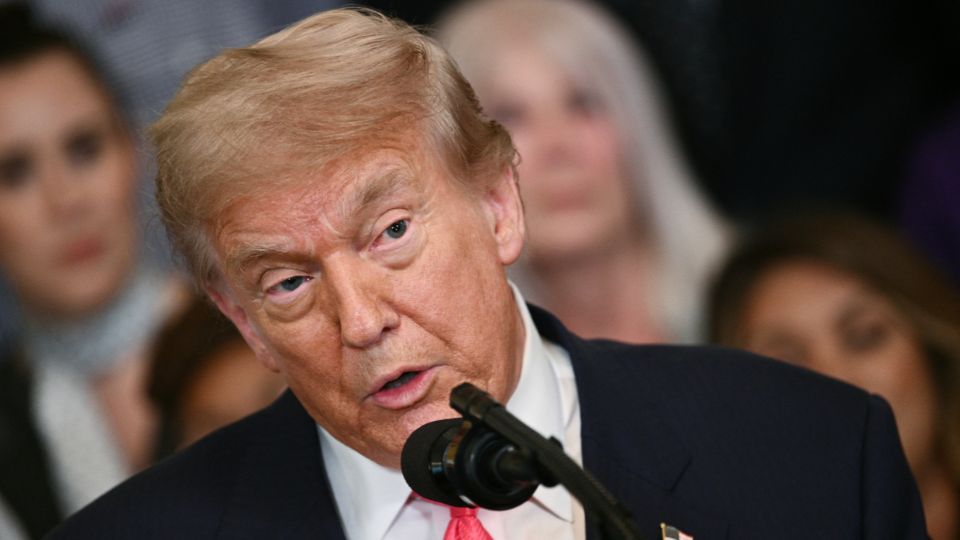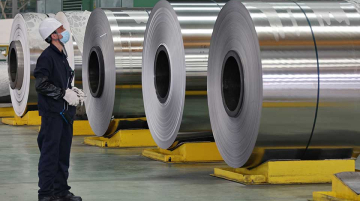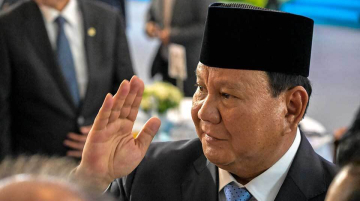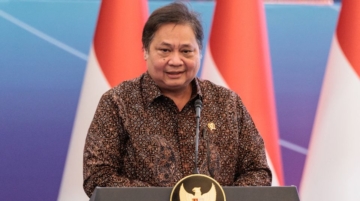
The U.S. tariffs regime is exposing fractures in Southeast Asia’s trade posture. When Indonesia’s former chief trade negotiator, Iman Pambagyo, looks at the region’s response to the latest wave of U.S. tariffs, his message is clear: Southeast Asia cannot afford to keep falling for Trump’s tariff trap.
Iman Pambagyo, who is also Indonesia’s former ambassador to the WTO, said Indonesia is also on the verge of walking into a strategic trap, as it continues to offer concessions to avoid up to 40% tariffs set to hit select ASEAN countries on August 1.
“I’ve been advising my government since before April: don’t play Trump’s game,” said Pambagyo to The China-Global South Project last Friday. “Unfortunately, we kept trying to appease him.”
He added that Trump’s demands go beyond trade: “It is time for governments around the world to realize that there’s no use in continuing to negotiate with Washington, DC,” he said, “They have their own mind. They have this idea of making America great again. They try to reestablish the Pax Americana, where the US could call the shots on every single issue of global impact.”
According to Pambagyo, Indonesia’s attempts to appease the U.S., from opening rare earth cooperation to offering 0% alcohol tariffs, have only emboldened Washington’s demands: “Even a close friend told me, ‘The best deal with the U.S. is no deal at all.’”
He likened the situation to a lopsided negotiation using this metaphor: “We offered Washington a Toyota Camry. They said, ‘Not good enough.’ So we gave them two Mercedes-Benz. ‘Okay, thank you, but still not enough.’ Then we added a Lamborghini. They said, ‘Thanks, but how about three?’ In the end, we gave everything, and still got hit with 32%. Then they said: ‘Can you offer some more?’”
Not About Trade
Pambagyo stresses that these tariffs are not about traditional trade frictions, “What I can sense is that the US worries as ASEAN countries get closer to China. It is about the waning of US influence in the region and the rise of China.”
He argues that Trump’s tariffs are political, not economic, tools: “What happened was not a mistake. It’s a signal that Trump’s tariff policy is not about fairness, balance, or negotiation. It’s about image, influence, and domestic politics.”
With a $123 billion surplus, Vietnam is the region’s biggest target but remains tight-lipped about its negotiating terms. Analysts suspect Hanoi is offering greater digital trade compliance and origin transparency, while avoiding explicit concessions that could provoke Beijing.
Indonesia, meanwhile, has placed rare earth minerals on the bargaining table, offering access to exploration zones in Mamuju and North Sumatra. Officials have pitched this as a strategic tradeoff to offset Washington’s tariff pressure, but industry readiness remains in question.
ASEAN Pushes Back
As the U.S.-China tariff war escalates, the region is asserting a new kind of agency, trade independence rooted in national interest. Economies like Indonesia, Vietnam, and Malaysia, at the end of the day, choose to protect their trade independence and sovereignty.
“Southeast Asia refuses to be cornered,” says Manu Bhaskaran, CEO of Centennial Asia Advisors and a leading voice on regional economic policy to The China-Global South Project. “We have agency. We can act. And we will act in our national interests.”
Asked whether Vietnam risked falling into Washington’s tactical playbook, Pambagyo replied: “I hope Indonesia will not get into that trap.”
Pambagyo’s remarks come as Vietnamese and Thai delegations continue last-minute technical meetings with U.S. trade officials in Washington.
“I think what’s being requested by Donald Trump doesn’t make sense,” Pambagyo said. “They even want us to invest in the U.S., but are they willing to accept Indonesian migrant workers? Who will fill the jobs in those investments?”
Trump is the Rules
While Pambagyo calls for ASEAN unity, the region’s current response to Trump’s tariffs suggests fragmentation. Thailand has offered Washington a zero-tariff deal on 90% of U.S. goods, its boldest play yet, but Washington is demanding deeper concessions.
Malaysia is negotiating quietly, avoiding major concessions, but its BRICS membership has added political complexity.
Meanwhile, Singapore, not yet targeted by formal tariffs, has launched a S$100,000 Business Adaptation Grant to insulate local firms from regional shocks.
The Philippines, hit with a revised 20% rate, is banking on exemptions for its critical semiconductor exports to limit the damage.
The former trade negotiator’s core message is that Southeast Asian governments must stop assuming rational, rules-based outcomes from negotiations with an administration that, every day, could change the rules.
“Trump is the rule. And every day, he could change his mind, meaning that he could change the rules. So, how do you deal with a country that keeps changing its policies?”
Instead of bilateral appeasement, he said, ASEAN and its partners should push for a rules-based system.
“If China can produce a particular product very cheap, but behind it there is a subsidy or dumping, then we have the instruments: anti-dumping, anti-subsidy, safeguards,” he said, “Trump is calling the shots… they create their own rules.”
Global Supply Chains Reconfiguration
Pambagyo predicted deeper fragmentation in global value chains. “So what we can see in the next few months and years is the reconfiguration of globalization.”
He described a future shaped by resilient, regionalized value chains, a sharp departure from the globalization model of the past two decades. “The future will be quite different from what we see today, or even five years ago,” Pambagyo said. “We are looking at regional, resilient value chains, where countries with geographical proximity will develop their supply networks with each other.”
Over time, he explained, these local and regional ecosystems would begin to interconnect. “At some point, this particular regional value chain will get connected with other regional value chains.”
He offered concrete examples: “Let’s say we talk about East Asia’s regional value chains. They will work together, supplying each other, buying goods here and there, from raw materials into finished products.” He added that similar networks were already emerging elsewhere. “We also see how regional value chains are being developed in Latin America, let’s say, between Argentina, Brazil, Panama, perhaps Mexico as well.”
Eventually, he argued, this would lead to a new kind of global integration, not centralized, but plural and multipolar. “These two regional value chains will get connected with each other. So this is the series of regional value chains that will arise from this situation. We will see a different globalization. We will see quite different global value chains being formed.”
He concluded that this shift would stem not only from ASEAN’s trade choices but also from a broader realignment already underway around the world, punctuating with a line meant to resonate across continents: “Everybody gets the trophy.”
He added that this would require Southeast Asian economies to diversify inputs and export markets. “The key words here are diversification of inputs, diversification of markets, diversification of value chains.”
Losing ASEAN Centrality
“ASEAN will continue to be your natural partners,” Pambagyo said. “Whether the U.S. or China sees us differently, ASEAN will not take sides.”
He emphasized that Southeast Asia’s trade with China, Japan, and Korea had been positive and conducted on equal footing. But he warned ASEAN’s diplomatic clout had diminished. He stated clearly that ASEAN is the only forum where rivals and partners sit together.
“Since the trade war and COVID, ASEAN leadership has lowered. This is the time to regain it. No other forum can bring China, Russia, the U.S., India, Japan, and Australia into the same room like the East Asia Summit. That’s ASEAN’s value,” said Pambagyo.
“So I really beg ASEAN to keep this leadership. I still believe in ASEAN. What we need now is, again, leadership from ASEAN to navigate this current situation.”
Don’t Cross the Red Line
Pambagyo delivers his most urgent warning about the core national interest.
“We don’t want to cross the red line, meaning that there is a core national interest in the case of ASEAN, core ASEAN interests that should not be crossed simply just to secure your particular product export to the United States.”
Pambagyo emphasizes, “We are in the process of negotiating closer economic partnerships with Canada, Mercosur, the EU, and Eurasia.”
“It is not the end of the world,” he said. “But it requires ASEAN to have an open mind to go through this process of reconfiguration of globalization. Stay positive. Stay optimistic. But we have to be realistic. So long as we engage constructively, there will be a way for us to get through this.”
The urgency of that leadership was echoed Wednesday by Malaysian Prime Minister Anwar Ibrahim during the ASEAN Foreign Ministers’ Meeting.
Anwar warns the world is entering an era where ‘power unsettles principle’ and ‘tools once used to generate growth are now wielded to pressure, isolate and contain’.
“This is no passing storm,” he told ministers. “It is the new weather of our time.”
Anwar called on ASEAN members to turn declarations into action by boosting intra-ASEAN trade, investing in deeper regional integration, and reducing strategic dependencies on outside powers.
“Our cohesion must not end at declarations,” he said, urging a collective response to rising trade threats.







